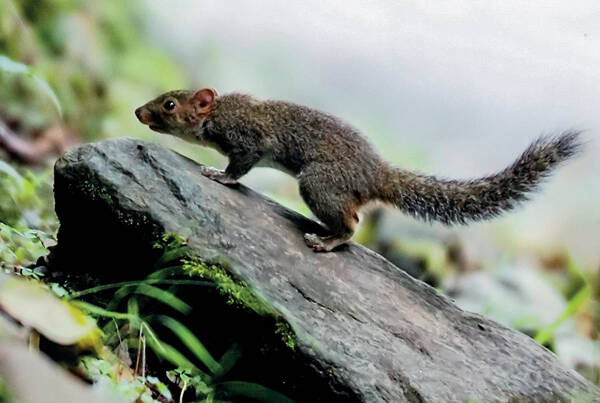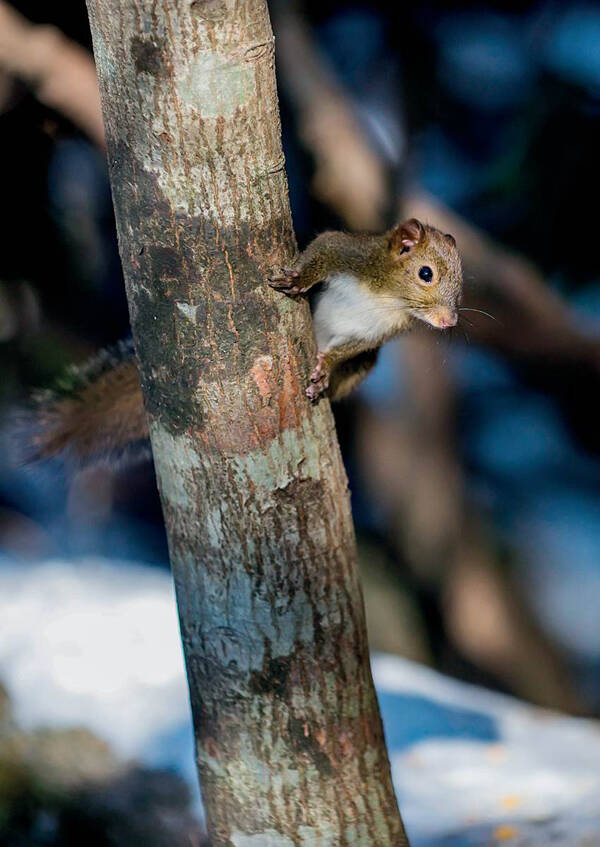Dremomys pernyi
IUCN
LCBasic Information
Scientific classification
- name:Dremomys pernyi
- Scientific Name:Dremomys pernyi,Perny's Long-nosed Squirrel,Long-nosed squirrel, squirrel, hairy mouse
- Outline:Rodents
- Family:Rodentia Sciuridae Sciurus
Vital signs
- length:189-207mm
- Weight:
- lifetime:
Feature
This species has the shortest snout among the genus Sciurus.
Distribution and Habitat
In China, it is distributed in Sichuan, Chongqing, Gansu, Shaanxi, Yunnan, Hubei, Guizhou, Fujian, Jiangxi, Zhejiang, Anhui, Taiwan, Hunan, Guangxi and Guangdong. Abroad, it is distributed in Myanmar, Vietnam, India, etc.
It lives in subtropical forests and bushes near farmland. It usually moves in the middle and lower layers of the forest and is active frequently at dawn and dusk.
Appearance
The Perth's squirrel is an elongated, slender-bodied squirrel with a tail shorter than its body and shaggy tail hair. It has light brown eye sockets, no red cheeks, and a light yellow or rusty red patch behind the ears. The back is mainly olive tan overall. The abdomen is white. There are no patches on the buttocks, and the outer side of the legs is light yellow-white, similar in color to the throat and abdomen. The anal area and the ventral surface of the tail base are reddish brown (orange), the ventral surface of the tail is light yellow or brown, and the tail hair is tipped with white.
Details
Pernyi's long-nosed squirrel (scientific name: Dremomys pernyi) is an animal of the Sciuridae family and the genus Dremomys. It mostly lives in subtropical forests, especially in tropical rainforests and trees near river valleys and streams.

Perkins's long-nosed squirrels mainly live in trees, mostly in valleys and trees beside rivers and streams, active at dawn and dusk, sometimes running from trees to the ground, walking through the grass, and also active on fallen trees in the forest, and looking for food while moving. Perkins's long-nosed squirrels are very alert. Once there is any movement, they will abandon their young, crawl down the tree trunk, and hide in the cave in the weeds. At this time, mice make a "squeak" sound, which makes it easy to find the nest.
The nest of Perth's long-nosed squirrel is built in the dense branches and leaves of fir trees. Its nest is smaller than that of the red-bellied squirrel, oval, generally 35cm long, 25cm wide, and about 10cm high. The outer layer is new branches and leaves of trees such as Masson pine, and the inner layer is pine needles and moss.

Perkins's long-nosed squirrels forage in the morning and evening, mainly eating various fruits, such as chestnuts, chestnuts, acorns, pine nuts, fir seeds and other nuts, as well as some berries, young leaves, etc., and also eat a small amount of insects. The main natural enemies are mustelids, cats and civets.

Perkins's long-nosed squirrels have chasing mating in February and June, so they reproduce about twice a year, with a pregnancy rate of 25% from May to September, and the number of pups per litter is generally 3-4, with a maximum of 8.
In China, Perkins's long-nosed squirrels live in the same environment as red-bellied squirrels, but their numbers are smaller.









